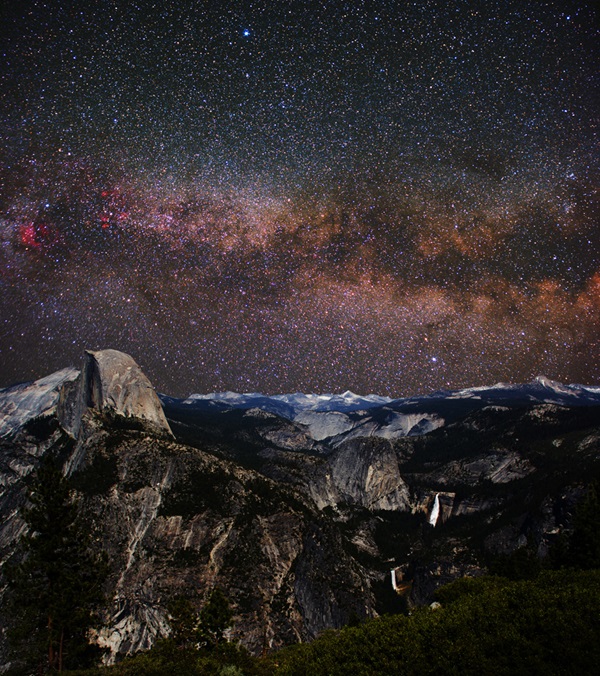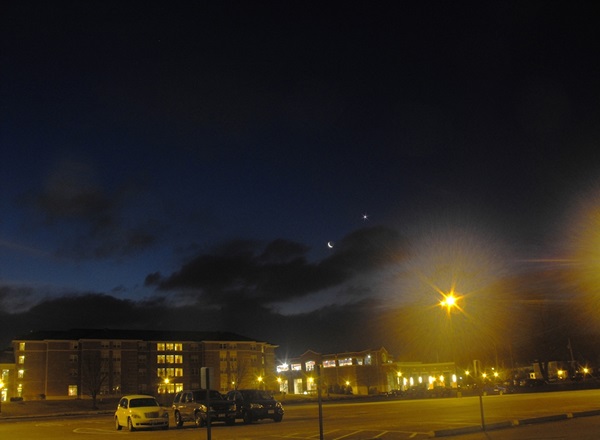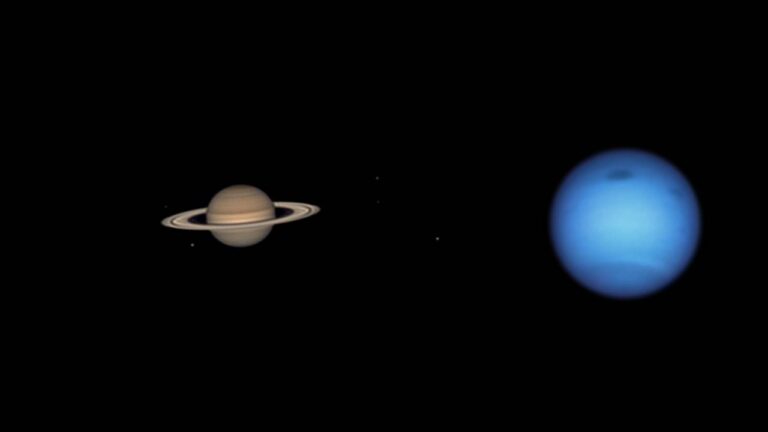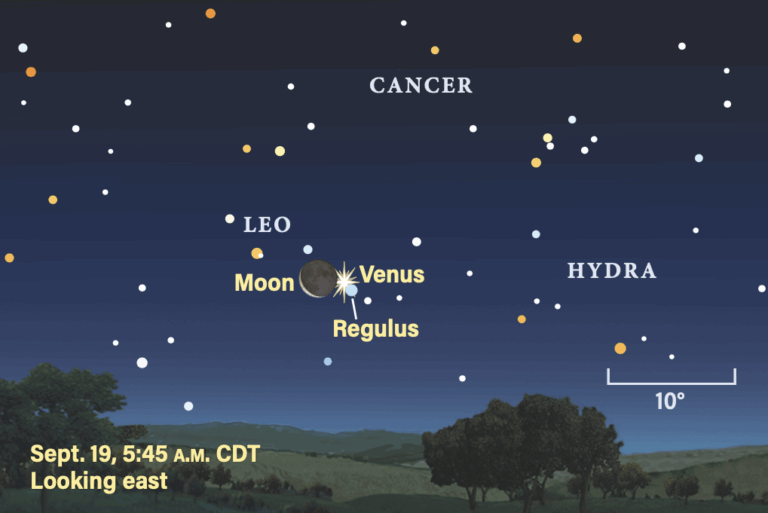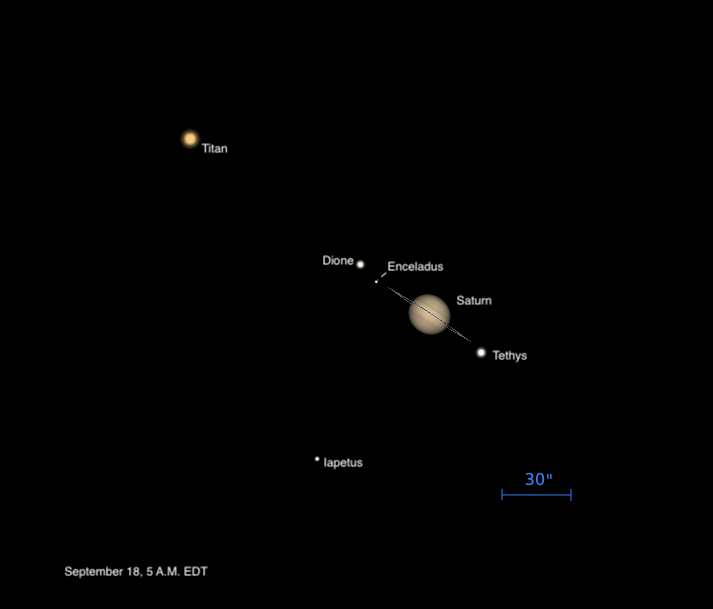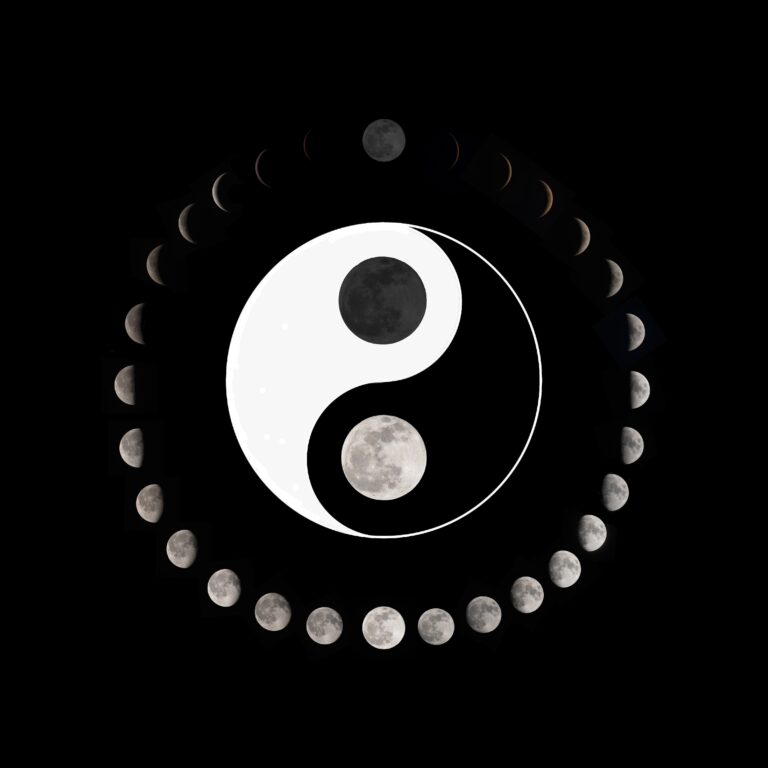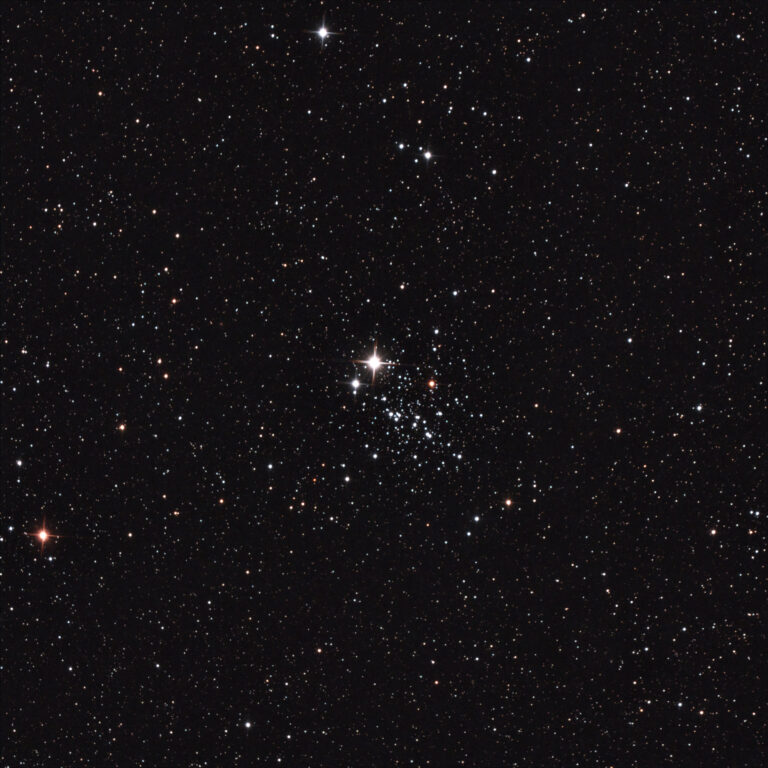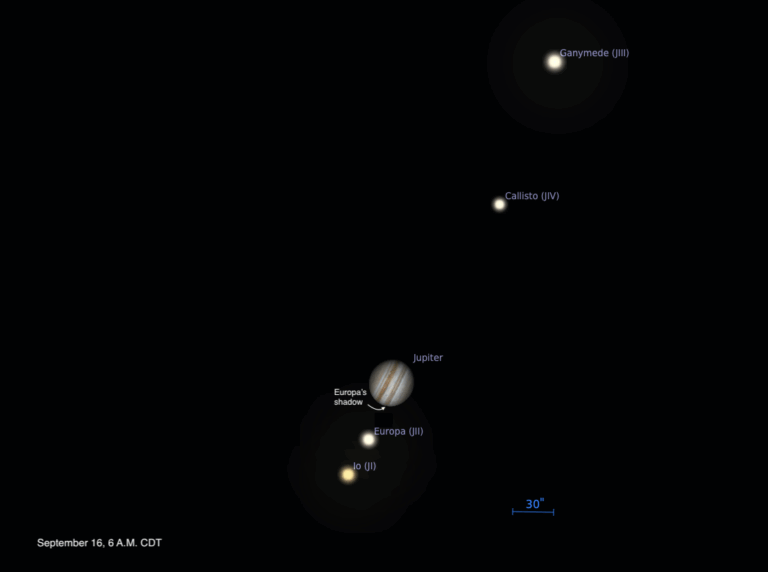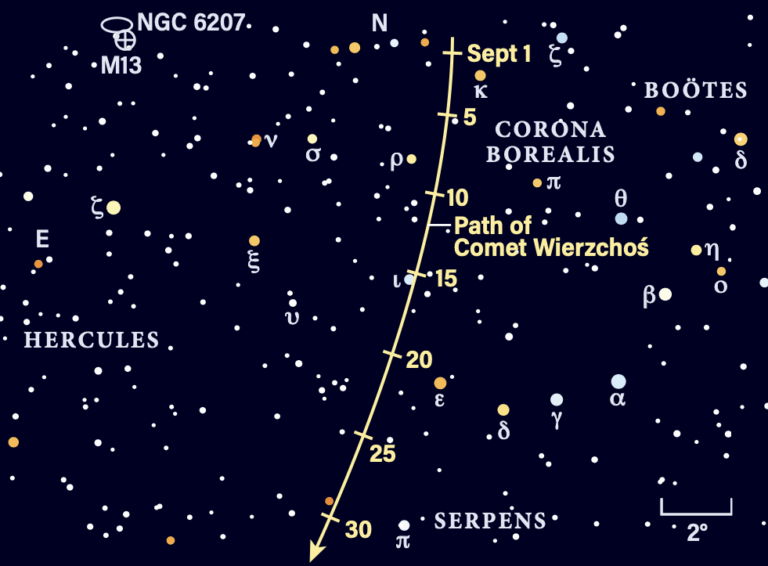Key Takeaways:
Last Quarter Moon occurs at 6:18 p.m. EDT. When it rises shortly before 3 a.m. local daylight time tomorrow morning, it will appear slightly less than half-lit. Earth’s only natural satellite appears against the faint background stars of Capricornus the Sea Goat.
Mars continues to add its ruby-red glow to Taurus the Bull this week. Shining at magnitude 1.6, the Red Planet appears slightly fainter than the constellation’s brightest star, ruddy 1st-magnitude Aldebaran. The planet lies about 25° above the western horizon an hour after sundown and doesn’t set until after 11 p.m. local daylight time. Once the sky darkens, you should notice that Mars is perched within the borders of the 6th-magnitude open star cluster NGC 1746. Because the cluster is big — its diameter is slightly larger than the Full Moon — you’ll want to use binoculars or a telescope at low power for the best views. Unfortunately, Mars spans only 4″ and won’t show any detail.
Saturday, April 27
You can use the Big Dipper as a guide to two of the spring sky’s brightest stars. If you follow the curve of the Dipper’s handle toward the eastern horizon, you’ll easily spot Arcturus. This magnitude 0.0 star, which belongs to Boötes the Herdsman, lies some 30° from the end of the Big Dipper’s handle. It is the fourth-brightest star in the whole sky and the second-brightest visible from mid-northern latitudes. And if you continue the curve another 30° past Arcturus, you’ll arrive at magnitude 1.0 Spica, the luminary of Virgo the Maiden. An easy way to remember the two is with the phrase: “Follow the arc to Arcturus, then drive a spike to Spica.”
Sunday, April 28
While the Lyrid meteor shower winds down this week, the Eta Aquariid shower ramps up. And the dwindling Moon casts less light into the morning sky as the week progresses, so observing conditions improve dramatically. The best views will come in the hour or two before morning twilight commences, when you might see 5 to 10 meteors per hour from a dark site. The Eta Aquariids will peak before dawn May 6, when Northern Hemisphere observers could see up to 20 meteors per hour under dark skies.
The Moon reaches apogee, the farthest point in its orbit around Earth, at 2:20 p.m. EDT. It then lies 251,396 miles (404,582 kilometers) from Earth’s center.
Saturn rises a little before 1:30 a.m. local daylight time and climbs some 25° high in the south-southeast as morning twilight starts to paint the sky. The ringed planet shines at magnitude 0.5 against the backdrop of northern Sagittarius the Archer. When viewed through a telescope, Saturn shows a 17″-diameter disk surrounded by a stunning ring system that spans 39″ and tilts 23° to our line of sight. The outer world reaches a significant milestone today. From our viewing perspective, its eastward motion against the background stars comes to a halt as it starts to head westward in anticipation of its early July opposition.
Tuesday, April 30
As Mars marches eastward across Taurus this week, it approaches the two stars that represent the Bull’s horns: Beta (β) and Zeta (ζ) Tauri. This evening, the Red Planet forms an isosceles triangle with the pair.
Wednesday, May 1
This week provides skywatchers with their final opportunity to get a good view of Sirius, the night sky’s brightest star, before evening twilight swallows it. This luminary gleams at magnitude –1.5 low in the southwestern sky. If you look an hour after sunset (approximately 9 p.m. local daylight time), Sirius lies about 10° high. In all likelihood, the star will be twinkling madly as its light passes through the thick layers of turbulent air that lurk near the horizon.
Venus pokes above the eastern horizon about an hour before sunrise. The brilliant planet dominates the predawn sky as the rosy glow heralding the Sun’s arrival grows brighter. Venus shines at magnitude –3.8, more than three times brighter than the second-brightest planet, Jupiter. The inner planet looks stunning all week, but never more so than it does this morning when a waning crescent Moon passes 4° to its south (lower right). If you view Venus through a telescope, you’ll see a disk that spans 11.5″ and appears nearly 90 percent lit.
Friday, May 3
Although the calendar says May, the sky’s Summer Triangle returns to prominence this month. The asterism’s three bright stars — Vega in Lyra, Deneb in Cygnus, and Altair in Aquila — all clear the horizon by midnight local daylight time. An hour later, they rule the eastern sky. Vega shines brightest and appears at the apex of the triangular asterism. Look for Deneb to Vega’s lower left and Altair to the lower right of the other two. The Summer Triangle will grace the Northern Hemisphere’s evening sky from now through the end of the year.
Saturday, May 4
Head outside late this evening and you can’t miss Jupiter. The giant planet rises shortly after 11 p.m. local daylight time and climbs highest in the south around 4 a.m. Jupiter shines at magnitude –2.5, which makes it the brightest point of light in the sky until Venus rises during twilight. The planet currently resides among the much dimmer stars of the constellation Ophiuchus. A telescope reveals the gas giant’s 44″-diameter disk and four bright moons.
New Moon occurs at 6:46 p.m. EDT. At its New phase, the Moon crosses the sky with the Sun and so remains hidden in our star’s glare.
Sunday, May 5
One of this year’s best meteor showers reaches its peak before dawn tomorrow morning. The Eta Aquariid shower derives from bits of debris ejected by Comet 1P/Halley during its many trips around the Sun. When Earth crosses this debris stream, our planet’s atmosphere incinerates the tiny dust particles and we see the streaks of light called meteors, or “shooting stars.” Shortly before dawn, an observer at a dark site can expect to see up to 20 meteors per hour — an average of one every 3 minutes. Viewers in the Southern Hemisphere, where the shower’s radiant (in the constellation Aquarius) passes nearly overhead, should see twice as many. And with the Moon having reached its New phase yesterday, conditions should be ideal.

